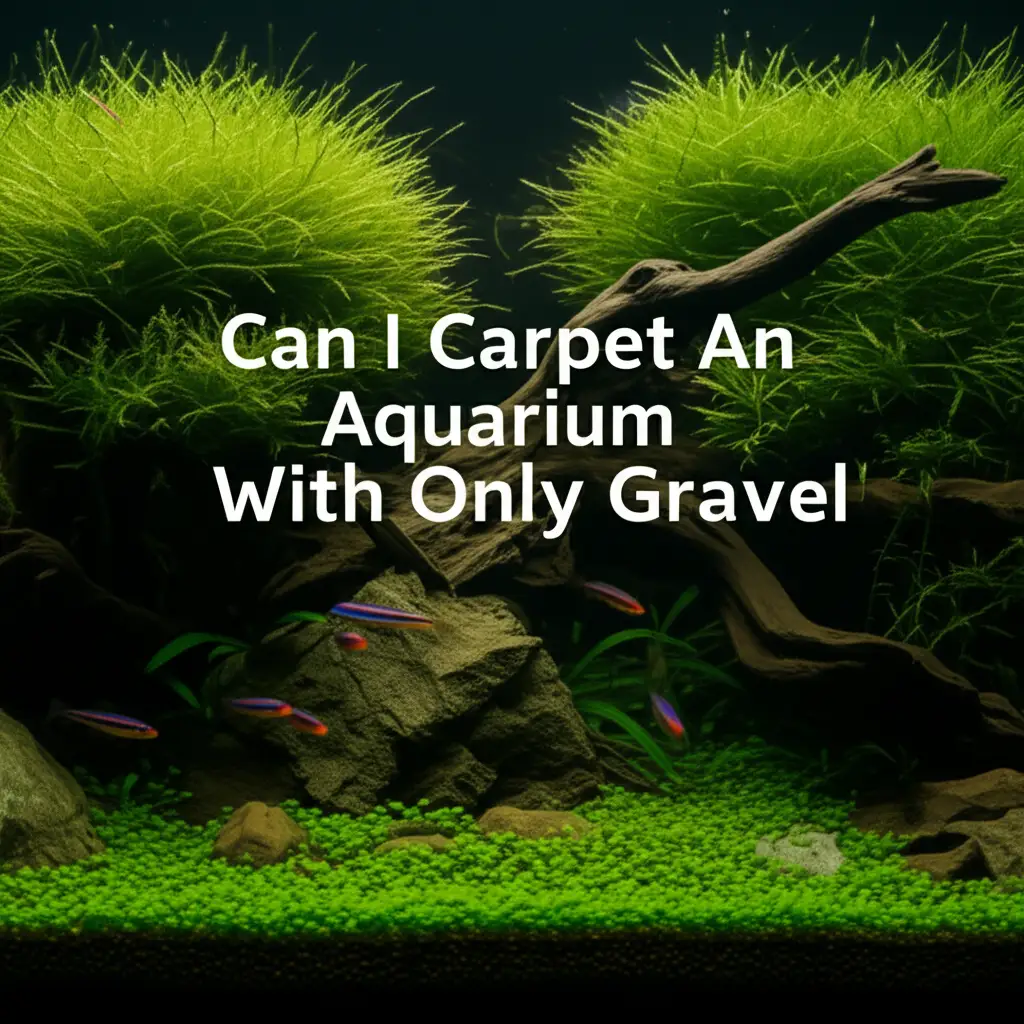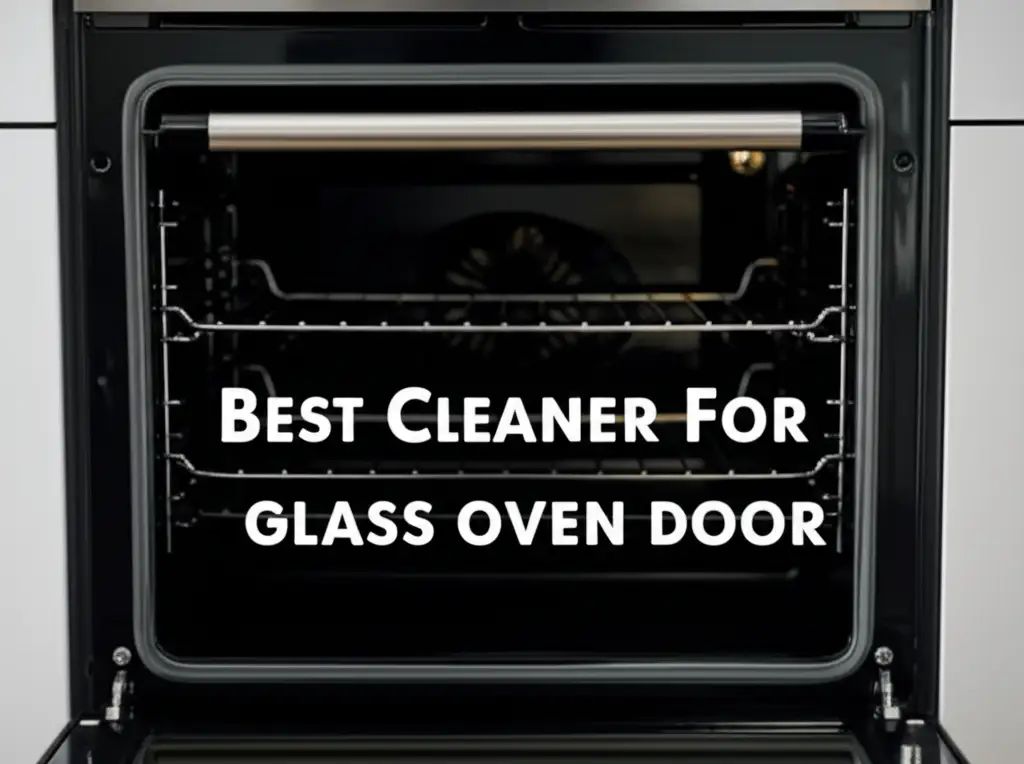· Liora Benning · Aquascaping · 17 min read
Can I Carpet An Aquarium With Only Gravel

Can I Carpet an Aquarium with Only Gravel? Understanding Substrate Choices
Imagine looking into your aquarium. You see a vibrant green landscape. Lush plants spread across the bottom. This is an aquatic plant carpet. Many hobbyists dream of this look. People often wonder if simple gravel can achieve this effect. Can you truly carpet an aquarium with only gravel? I will explore this question. This article explains the challenges of using only gravel. It discusses the needs of carpeting plants. We will look at proper substrate choices. I will also share tips for a successful planted tank.
Takeaway:
- Gravel alone usually does not support true aquatic plant carpets.
- Carpeting plants need nutrient-rich substrates for growth.
- Enriched soil or specialized plant substrates are best for carpeting plants.
- Good lighting and CO2 injection help achieve dense plant carpets.
- Regular maintenance ensures a healthy and vibrant aquatic carpet.
Can you carpet an aquarium with only gravel? In most cases, no. Gravel alone lacks the nutrients and fine structure that many carpeting plants require. Achieving a dense, lush plant carpet needs specific substrate types and proper plant care.
Defining “Carpeting” in Aquariums: More Than Just Substrate
When we talk about “carpeting” in aquariums, we mean something specific. It describes certain aquatic plants. These plants grow low and spread horizontally. They form a dense, uniform layer. This layer covers the aquarium bottom. It looks like a green carpet. This effect adds depth and beauty to any aquascape. A true carpet requires specific conditions for these plants to thrive.
The plants need proper anchorage. They also need a steady supply of nutrients. These nutrients are essential for strong root development. Without the right conditions, plants struggle to spread. They may just grow tall and spindly. They will not form the desired carpet. My goal is to help you understand what makes a successful carpet. I want to guide you through the process.
Carpeting plants have unique growth habits. They often use runners or rhizomes. These parts spread across the substrate. They then send up new shoots. This process forms the dense mat. Examples include Dwarf Hairgrass and Monte Carlo. These plants demand precise care. They need stable conditions to flourish. They also need proper root development. The substrate plays a critical role in providing this.
Many people start with gravel. They think it might be enough. Gravel is a common substrate in aquariums. It holds down decor. It provides surface area for beneficial bacteria. However, gravel often lacks key elements. It does not provide the rich nutrients. These nutrients are crucial for carpeting plants. We will discuss these limitations further. We will also explore better options for your planted tank.
The Role of Gravel in an Aquarium Substrate
Gravel serves several purposes in an aquarium. It helps anchor decorations. It holds down larger plants. It also provides a home for beneficial bacteria. These bacteria break down waste. This helps keep water clean. Gravel pieces allow water to flow through them. This prevents stagnant areas. It makes gravel a good choice for basic fish tanks.
However, gravel has limits. Its particles are often too large. They do not hold fine roots well. The spaces between gravel pieces are big. Nutrients can wash away quickly. They do not stay in the root zone. This makes it hard for plants to absorb them. Plants need constant nutrient access. This is especially true for delicate carpeting plants.
Gravel does not contain nutrients itself. It is largely inert. This means it offers no food for plants. Plants get nutrients from the water column or the substrate. Carpeting plants rely heavily on substrate nutrients. They send roots deep into the substrate. They search for food there. If the gravel is inert, plants starve. Their growth becomes stunted. They fail to spread.
Think about a standard carpet in a house. You put things on it. It protects the floor. But it does not provide nourishment for living things. Similarly, aquarium gravel is a base layer. It is good for general aquarium use. But it falls short for demanding plant growth. You need more than just a base. You need a rich foundation for roots.
Some people try to add root tabs to gravel. Root tabs are solid nutrient supplements. They release food slowly. This can help some plants. But it is often not enough for a full carpet. It also does not address the poor root anchorage. Fine roots struggle to grip larger gravel pieces. This makes it hard for plants to establish themselves.
Challenges of Achieving a Plant Carpet with Pure Gravel
Attempting to carpet an aquarium with only gravel presents significant challenges. The main issue is nutrient deficiency. Carpeting plants are heavy root feeders. They draw most of their nutrients from the substrate. Regular aquarium gravel is inert. It does not contain essential plant nutrients like iron, potassium, or nitrates. Plants grown in pure gravel will quickly show signs of deficiency. Their leaves might yellow or stunt. This makes a dense carpet impossible.
Another challenge is root stability. Carpeting plants have fine, delicate root systems. They need a fine-grained substrate to anchor themselves. Gravel particles are often too large and irregular. Plant roots struggle to grip them firmly. This causes plants to float up easily. Fish movements or water changes can dislodge them. It makes establishing a consistent carpet frustrating. Keeping a strong hold on fine roots is crucial for aquatic plants. In a house, you need to know how to keep a carpet down so it does not slip. Aquarium plants need similar stability in their substrate.
Compaction is another problem. Over time, gravel can compact. This reduces water flow through the substrate. Roots need oxygen. Compaction deprives them of oxygen. This leads to root rot. It hinders nutrient uptake. A healthy substrate needs good porosity. This allows water and gases to move freely. Pure gravel can become too dense. This suffocates plant roots.
Furthermore, gravel makes propagation difficult. Carpeting plants spread by sending out runners. These runners need to root quickly into the substrate. If the gravel is too coarse, runners cannot establish. They might just sit on top. They will not anchor themselves. This prevents the spreading needed for a true carpet. Without proper rooting, the carpet will not fill in.
Maintaining cleanliness in pure gravel can also be hard. Waste can fall into the large gaps. It collects at the bottom. This creates anaerobic pockets. These areas lack oxygen. They can produce harmful gases. This harms both plants and fish. While you can use a siphon to clean gravel, it can disturb delicate plant roots. Cleaning the substrate is vital for tank health. Just like you might clean a bathroom carpet regularly, your aquarium substrate also needs attention to prevent buildup.
These challenges highlight why pure gravel is not ideal. It lacks the structure and nutrients. It cannot meet the specific demands of carpeting plants. A successful plant carpet requires a more specialized substrate. We will discuss these better options next.
Essential Substrate Components for Lush Aquarium Carpets
To achieve a lush aquatic plant carpet, you need more than just gravel. Specialized substrates are essential. These substrates provide the necessary nutrients and structure. They create an ideal environment for roots. I will outline the best choices.
Nutrient-Rich Substrate Layer
The base layer of your substrate should be nutrient-rich. These products are often called “aquarium plant substrate” or “planted tank soil.” They contain essential macro and micronutrients. These nutrients are vital for plant growth. They release food slowly into the water. This feeds the plant roots. Brands like ADA Aqua Soil or Fluval Stratum are popular choices. They create a fertile base. This soil helps plants establish quickly.
Sand or Fine Gravel Cap
On top of the nutrient layer, add a cap. This cap layer should be fine sand or very fine gravel. This layer serves several purposes. It holds the nutrient-rich soil down. It prevents the soil from clouding the water. It also provides a perfect medium for roots. Fine particles offer good anchorage. They allow delicate roots to spread easily. A depth of 1-2 inches for the cap is usually sufficient. This cap layer is crucial for the overall success of the carpet.
Substrate Additives (Optional but Recommended)
You can further enhance your substrate. Consider adding root tabs. These are small pellets. They contain concentrated nutrients. You bury them near the plant roots. They release food over time. This boosts plant health. Another option is a thin layer of inert material, like lava rock crumbs, under the nutrient soil. This improves water circulation. It also provides more surface area for beneficial bacteria.
Layering the Substrate
Proper layering is key. Start with a thin layer of inert base material if desired. Then add 1-2 inches of nutrient-rich substrate. Spread it evenly. Next, carefully add 1-2 inches of fine sand or very fine gravel. This caps the nutrient layer. Ensure you do not mix the layers. This method maximizes nutrient availability. It also provides proper root support. This approach sets up your tank for carpeting success.
Remember, the substrate is the foundation. It provides food and stability. Just as a strong foundation supports a house, a rich substrate supports your aquatic plants. Do not cut corners here. Investing in good substrate pays off with a beautiful, thriving plant carpet.
Selecting and Preparing Carpeting Plants for Your Aquarium
Choosing the right plants is as important as the substrate. Not all plants can form a dense carpet. You need specific species known for their spreading habit. I will discuss popular and suitable choices. I will also explain how to prepare them for planting.
Popular Carpeting Plant Species
- Dwarf Hairgrass (Eleocharis parvula/acicularis): This plant grows very fine, grass-like blades. It spreads quickly via runners. It forms a lush, grassy lawn. It needs strong light and CO2 for best results.
- Monte Carlo (Micranthemum Monte Carlo): Monte Carlo forms a dense, compact mat. Its leaves are small and round. It is a popular choice for its beautiful appearance. It also prefers good lighting and CO2.
- Staurogyne repens (S. Repens): This plant has sturdy stems and oval leaves. It grows more upright initially. With proper trimming, it can be encouraged to creep. It forms a bushier carpet. It is more forgiving regarding CO2.
- Glossostigma elatinoides (Glosso): Glosso is a classic carpeting plant. It has tiny, spade-shaped leaves. It grows very low and spreads fast. It requires intense light and CO2 injection. This plant can be demanding.
When selecting plants, consider your tank setup. Think about your lighting and whether you will use CO2. Some plants are harder to grow than others. Start with easier ones if you are new to planted tanks.
Preparing Plants for Planting
Once you have your plants, preparation is crucial. Most carpeting plants come in pots or tissue culture.
- From Pots: Gently remove the plant from the pot. Rinse off the rockwool or growing medium. Use scissors to separate the plant into small clumps. Each clump should have roots attached. This makes planting easier. It also encourages faster spreading.
- From Tissue Culture: Tissue culture plants are sterile. Rinse off the gel thoroughly under cool running water. Separate the plant mass into small portions. These portions are ready for planting.
Cleanliness is important. You do not want to introduce pests or algae. Proper preparation helps plants adapt to the aquarium environment.
Planting Techniques
Planting carpeting plants requires patience. Use long-handled tweezers. Plant small individual clumps or portions. Space them about 1-2 inches apart. Push the roots firmly into the substrate. Make sure they are well anchored. The finer the substrate, the easier this is. Planting densely from the start encourages faster carpeting. This minimizes gaps.
After planting, ensure stable water parameters. Keep lighting consistent. If using CO2, set it up properly. Fertilization is also important. Liquid fertilizers add nutrients to the water column. Root tabs supplement substrate nutrients. These factors combined create an ideal environment. Your plants will then grow and spread. They will form that beautiful carpet you desire.
Beyond Gravel: Enhancing Plant Growth and Carpet Success
Achieving a vibrant plant carpet goes beyond just substrate. Several environmental factors play a critical role. They significantly impact plant health and growth. I will discuss these key elements. They are essential for a successful, dense carpet.
Optimal Lighting
Light is plant food. Carpeting plants need strong, consistent lighting. Low light conditions cause plants to stretch. They become leggy. They will not form a dense carpet. Look for LED lights designed for planted tanks. They provide the right spectrum and intensity. Aim for 8-10 hours of light per day. Too much light can cause algae blooms. A timer ensures consistent photoperiods. Good light penetration reaches all plants.
Carbon Dioxide (CO2) Injection
CO2 is a vital nutrient for plants. It is like breathing air for us. Plants use CO2 for photosynthesis. This process converts light energy into food. Most carpeting plants benefit greatly from CO2 injection. Some even require it for success. CO2 systems can be complex, but they boost growth significantly. They lead to faster, denser carpets. I use CO2 in my own planted tanks. The difference is clear. It helps plants use nutrients more efficiently.
Nutrient Supplementation
Even with a nutrient-rich substrate, plants need more. Liquid fertilizers supplement water column nutrients. They provide elements like nitrogen, phosphorus, and potassium. These are macronutrients. Trace elements like iron and manganese are also crucial. They support various plant functions. Use a comprehensive liquid fertilizer daily or weekly. Follow dosing instructions carefully. Overdosing can lead to algae. Root tabs refresh substrate nutrients over time. They are great for long-term health.
Water Parameters
Stable water parameters are important. Keep temperature consistent. Maintain appropriate pH levels. Most aquatic plants prefer slightly acidic to neutral water. Hardness also matters. Research the specific needs of your chosen plants. Regular water changes help. They replenish trace elements. They also remove waste products. Clean water means healthy plants.
Filtration and Flow
Good filtration keeps water clear. It removes organic waste. A gentle water flow is beneficial. It distributes nutrients evenly. It also brings CO2 to all plants. Strong flow can uproot delicate plants. It can also push CO2 away too fast. Aim for a moderate flow. This supports both plants and fish.
Remember, a planted tank is a balanced ecosystem. Each element supports the others. By providing optimal lighting, CO2, and nutrients, you empower your plants. They will thrive and create that stunning green carpet. This comprehensive approach ensures long-term success.
Maintenance and Long-Term Care for a Carpeted Aquarium
Maintaining a carpeted aquarium requires ongoing effort. Proper care ensures the carpet stays dense and healthy. It also prevents common issues like algae. I will detail the steps needed for long-term success.
Regular Trimming
Carpeting plants grow. They will eventually become too tall or dense. Regular trimming is crucial. Use sharp, long-handled scissors. Trim the carpet to your desired height. Do not trim too much at once. Aim to trim every 1-2 weeks, depending on growth speed. Trimming encourages horizontal growth. It makes the carpet denser. It also prevents lower leaves from being shaded. This prevents them from dying off. Dead leaves can contribute to algae.
Substrate Cleaning and Fertilization
Even with a good substrate, cleaning is necessary. Gently siphon the surface of the carpet. Avoid digging into the substrate too much. This removes detritus and fish waste. Too much disturbance can release nutrients. It can also cloud the water. You can consider adding root tabs every 3-6 months. This replenishes nutrients in the substrate. Always follow product instructions for dosage.
When you need to clean your aquarium, it’s a bit like cleaning a home carpet. For instance, knowing how to clean a machine-made carpet involves specific methods to protect the fibers. Similarly, aquarium substrate cleaning needs careful execution to protect plant roots and the beneficial bacteria living within.
Algae Control
Algae is a common challenge in planted tanks. An imbalance in nutrients, light, or CO2 can cause it. Keep your photoperiod consistent. Ensure CO2 levels are stable. Do not overfeed fish. Overfeeding adds excess nutrients to the water. This fuels algae growth. Introduce algae-eating creatures like Amano shrimp or Otocinclus catfish. They help keep algae in check. Manual removal is also important. Scrape algae from glass. Remove it from plants. A healthy plant carpet outcompetes algae for nutrients.
Water Changes and Parameters
Perform regular water changes. This usually means 25-30% weekly. Water changes remove nitrates and other waste products. They also replenish essential trace elements. Monitor water parameters regularly. Check temperature, pH, and hardness. Ensure they remain stable. Sudden shifts can stress plants. Stable conditions promote robust growth.
Observing Your Plants
Pay close attention to your plants. Yellowing leaves can indicate nutrient deficiencies. Stunted growth might mean a lack of CO2 or light. Pale leaves often point to iron deficiency. Brown or melting leaves can signal rot or poor adaptation. Adjust your care based on these observations. Early intervention can save your carpet.
Long-term care is about consistency. Regular trimming, feeding, and monitoring are key. A well-maintained carpet provides a beautiful display. It also contributes to a healthier overall aquarium environment. I find the daily observation part enjoyable. It connects me with my aquatic garden.
FAQ Section
What type of gravel is best for aquarium plants?
For most aquarium plants, fine gravel or sand is better than coarse gravel. Fine substrates allow roots to anchor easily. They also hold nutrients more effectively. However, true carpeting plants benefit most from specialized nutrient-rich soil designed for planted tanks. Pure gravel is not ideal for them.
Can I use sand instead of gravel for a plant carpet?
Yes, you can use sand for a plant carpet, especially fine-grained sand. Sand provides good anchorage for fine roots. However, like gravel, sand is inert. It lacks nutrients. You must use a nutrient-rich base layer beneath the sand or supplement with root tabs. Sand can also compact, so regular aeration might be needed.
Do I need CO2 for carpeting plants?
Most true carpeting plants, like Dwarf Hairgrass or Monte Carlo, strongly benefit from CO2 injection. CO2 is a vital nutrient for photosynthesis. It promotes faster, denser growth. While some carpeting plants can grow without CO2, they will likely not form a thick, lush carpet. CO2 greatly enhances their success.
How long does it take for aquarium plants to carpet?
The time it takes for aquarium plants to carpet varies. It depends on plant species, lighting, CO2, and nutrient levels. Fast-growing plants with optimal conditions can begin to carpet in 4-8 weeks. Slower growers or tanks with less ideal conditions may take 3-6 months or longer to fully establish a dense carpet.
What are the easiest carpeting plants for beginners?
For beginners, Staurogyne repens (S. Repens) is a good choice. It is more forgiving with light and CO2. Marsilea hirsuta is another option. It is slower growing but less demanding. Dwarf Sagittaria (Sagittaria subulata) can also spread and form a grassy look. It tolerates a wider range of conditions.
Conclusion
Carpet an aquarium with only gravel? The simple answer is no, not effectively. While gravel serves many functions in a basic aquarium, it falls short for cultivating a lush, dense plant carpet. Carpeting plants have specific needs. They demand a nutrient-rich substrate for root development. They also need proper anchorage for their delicate root systems. Pure gravel simply does not provide these essentials.
Achieving that stunning green landscape requires a strategic approach. Invest in specialized planted tank substrates. These soils contain vital nutrients. They offer the perfect texture for roots to spread and anchor. Combine this with excellent lighting and carbon dioxide (CO2) injection. These elements fuel robust plant growth. They promote the dense, horizontal spreading that defines a true aquatic carpet.
Remember to choose the right carpeting plant species. Prepare them carefully before planting. Use proper planting techniques. Ongoing maintenance is also key. Regular trimming, gentle substrate cleaning, and consistent water parameters will ensure your carpet thrives. It will stay healthy and vibrant for years to come. Do not let the initial challenges deter you. The reward of a beautifully carpeted aquarium is immense. It transforms your tank into a living work of art. Are you ready to create your own lush underwater landscape? Start planning your planted tank today.





